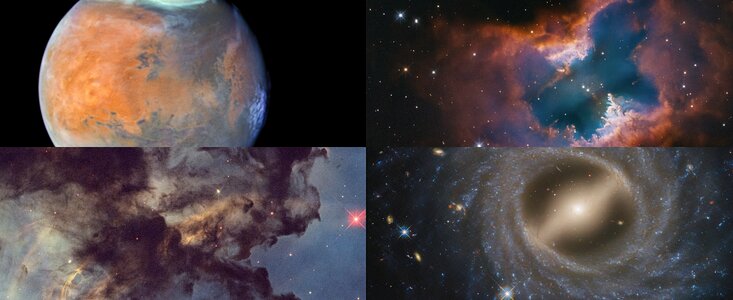Previous 1 ... 237 238 239 240 241 Next
That galaxy next door? It's home to a monster black hole
This appears to be the closest supermassive black hole outside our Milky Way galaxy, according to a report that's appearing in The Astrophysical Journal.
While scientists think that most galaxies have a giant black hole at their centers, until now no one knew that one of these beasts resides in the Large Magellanic Cloud, a dwarf galaxy that's right near the Milky Way.
"Now that there is strong evidence that it should be there, you can rest assured that we are very excitedly following up," says Jesse Han of the Center for Astrophysics, Harvard & Smithsonian, who led the study. "The search is on and we're using all the telescopes we can to look for it."
Can NASA remain nonpartisan when basic spaceflight truths are shredded?
Ah, yes. The Gulf of America.
This is why we can't have nice things.
As preps continue, it’s looking more likely that NASA will fly the Artemis II mission
NASA’s Curiosity rover has found the longest chain carbon molecules yet on Mars
Recent image of Neptune taken by the KECK telescopes.
Starliner’s flight to the space station was far wilder than most of us thought
They almost didn't make it to the station, and they weren't sure they could make it back to Earth safely.
Yes, there really is a black hole on the loose in Sagittarius
It’s “the only one so far,” says Kailash Sahu, an astronomer at the Space Telescope Science Institute in Baltimore.
In 2022, Sahu and his colleagues discovered the dark object coursing through the constellation Sagittarius. A second team disputed the claim, saying the body might instead be a neutron star. New observations from the Hubble Space Telescope now confirm that the object’s mass is so large that it must be a black hole, Sahu’s team reports in the April 20 Astrophysical Journal.
Hubble celebrates 35th year in orbit
A competing theory to 'dark energy' suggests the universe has different time zones
Dark matter was proposed to explain why we see galaxies rotate faster than they should be able to without flying apart. Speed is distance/time. We assume the time we see there is the same as the time we see here. But there is nothing in General Relativity that requires that, in fact GR says that mass slows down time. So there could be areas of the universe with more mass, in which time could pass slower.
This is called 'Modified Newtonian Dynamics" and explains what we observe without the need for dark matter that we can't see. So places that have more matter in them may cause time to pass slower than empty places.
I think this also might solve the Hubble Tension, were the gravitational constant of the universe seems to be two different values, depending on where we look.
Aurora seen by Weather satellites, with city lights below.
A star has been destroyed by a wandering supermassive black hole
Relax, it's 600M LY away, so in a different galaxy.
https://science.nasa.gov/asset/hubble/b ... at2024tvd/
For the first time in the US, a rotating detonation rocket engine takes flight
FAA: Airplanes should stay far away from SpaceX’s next Starship launch
New data confirms: There really is a planet squeezed in between two stars
Trump pulls Isaacman nomination for [NASA Head]. Source: “NASA is f***ed.”
Previous 1 ... 237 238 239 240 241 Next